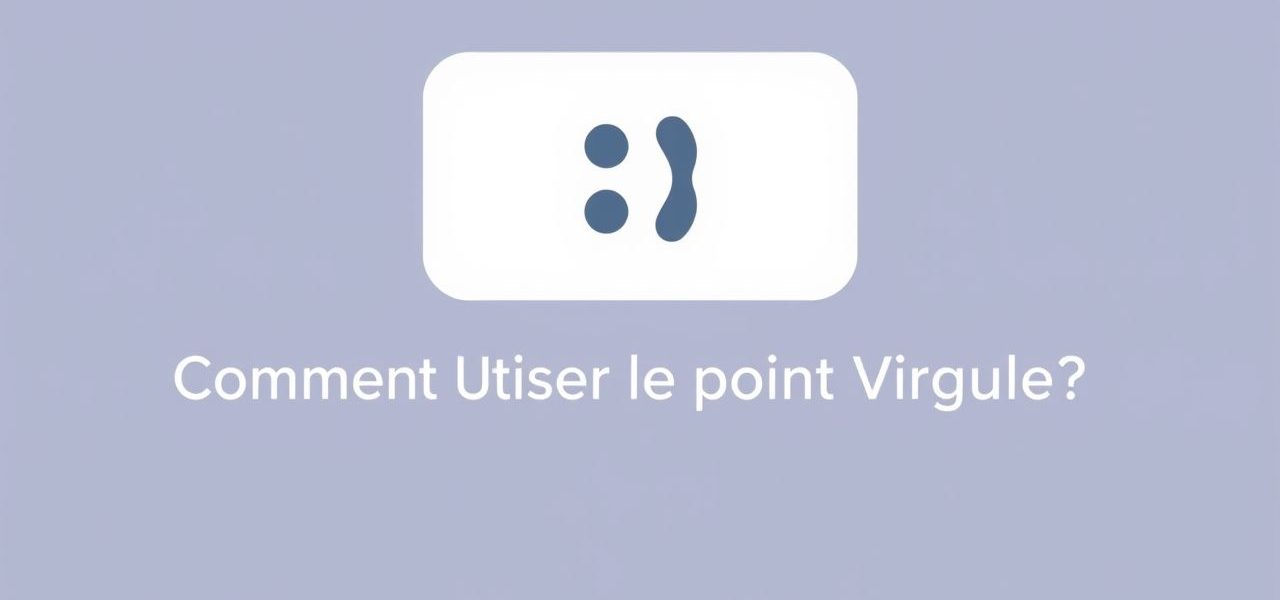Many people learning French often come across the punctuation mark known as the ‘point-virgule’ and wonder how to use it properly. This punctuation mark, which translates to ‘semicolon’ in English, can seem confusing at first glance. Unlike the more common comma or full stop, the semicolon exists in a middle space stronger than a comma but weaker than a full stop. Learning to use it correctly can enhance both clarity and elegance in your writing. Whether you’re writing essays, emails, or formal letters in French, understanding the role of the point-virgule is essential for clear and professional communication.
Understanding the Point-Virgule in French
The point-virgule (semicolon) looks just like in English: a small dot above a comma. Its usage is quite similar in both languages, though in French, it is often used with more stylistic flair. In French writing, the semicolon is a tool for precision, helping to connect related ideas and clarify complex sentences. It can be especially useful in formal or literary writing where sentence flow and logical progression are critical.
Basic Definition and Function
The point-virgule serves as a separator that is stronger than a comma but not as final as a period. Its primary role is to link closely related independent clauses, allowing the writer to emphasize a connection without using a coordinating conjunction. This creates a rhythm that improves readability while maintaining the logical flow of ideas.
When to Use the Point-Virgule
There are several specific contexts where the point-virgule is appropriate in French writing. Mastering these situations will help you write with greater clarity and sophistication.
1. Connecting Independent Clauses
One of the most common uses of the point-virgule in French is to connect two independent clauses that are thematically related. For example:
- Il faisait froid ; nous avons décidé de rentrer chez nous.
- Elle adore la peinture ; elle visite souvent les musées.
In both examples, the semicolon connects two full sentences that could stand alone, but using the point-virgule highlights the close relationship between the ideas.
2. Clarifying Lists with Internal Commas
Another practical use of the point-virgule in French is within complex lists. If list items already contain commas, using semicolons helps avoid confusion:
- Les invités étaient Paul, mon voisin ; Marie, la sÅur de Jacques ; et Léo, un collègue de travail.
Here, the point-virgule separates items that include additional information. Without the semicolon, the sentence would be hard to interpret.
3. Emphasizing Contrast or Comparison
The point-virgule can also be used to stress contrast or comparison between two ideas:
- Il aime sortir le soir ; elle préfère rester à la maison.
This subtle punctuation adds weight to the opposing ideas, creating a balanced sentence that clearly shows difference or contradiction.
Common Mistakes to Avoid
Even though the point-virgule is useful, it is not always necessary or appropriate. Avoid these frequent errors when using it:
1. Using it to Replace a Comma
Some writers mistakenly use the point-virgule where a simple comma would suffice. Remember, the semicolon connects independent clauses or complex list elements, not just any two thoughts.
2. Overusing It
While the point-virgule is elegant, using it too often can make your writing feel stilted or overly formal. It’s best to use it sparingly, reserving it for situations where it truly enhances clarity or flow.
3. Forgetting Space Rules
In French typography, it’s standard to include a non-breaking space before a point-virgule:
- Correct: Il a gagné ; elle a perdu.
- Incorrect: Il a gagné; elle a perdu.
This spacing rule is unique to French and should be followed in formal writing.
Tips for Mastering the Point-Virgule
Using the point-virgule effectively requires practice and a good understanding of sentence structure. Here are a few helpful tips to improve your use of this punctuation mark:
- Read French literature or news topicsto see how professional writers use the point-virgule in real contexts.
- Write sentences with related ideasand experiment connecting them using semicolons.
- Ask for feedbackfrom fluent French speakers or teachers to refine your punctuation usage.
- Review grammar resourcesthat focus on punctuation in French to reinforce your understanding.
Why the Point-Virgule Matters
Mastering punctuation, including the point-virgule, is an important step toward writing fluently and confidently in French. It allows you to create sentences that are not only grammatically correct but also stylistically appealing. Using the point-virgule correctly signals that you have a solid grasp of advanced writing techniques and adds a level of sophistication to your language skills.
Enriching Written Expression
Beyond grammar, the semicolon enhances your ability to express nuanced ideas. In essays, reports, or even creative writing, the point-virgule helps you present relationships between thoughts with clarity and elegance. It shows that you are thinking carefully about the structure and rhythm of your writing, something that native French speakers value greatly.
Supporting Logical Flow
Logical writing is not just about correct vocabulary and grammar. It also involves the organization of ideas. The point-virgule plays a role in supporting that structure, especially when transitions between thoughts need to be smooth yet distinct.
Becoming Comfortable with the Point-Virgule
Learning to use the point-virgule in French takes time, but it’s a worthwhile investment. This punctuation mark is subtle yet powerful, offering writers a refined way to connect ideas, clarify lists, and emphasize contrasts. As you become more comfortable with French grammar and style, integrating the point-virgule into your writing will become more intuitive. Practice, observation, and attention to detail will help you master this elegant tool, ultimately enhancing your ability to communicate clearly and effectively in French.
